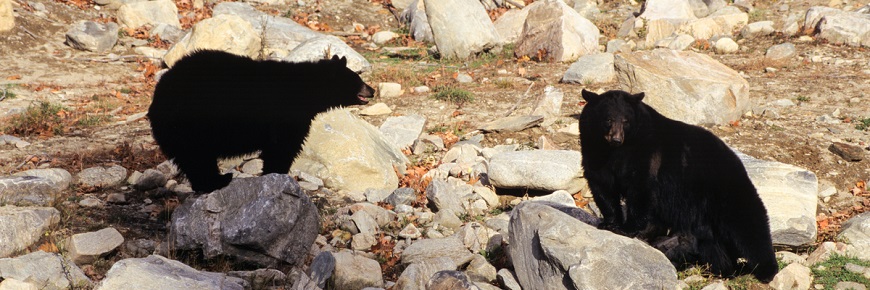
Black Bear
Fort St. Joseph National Historic Site
The American black bear (Ursus americanus) is widespread across Canada, and can be found on St Joseph Island. As the name suggests, the dominate colour for the bears is black, although lighter brown and cinnamon colours have been recorded. They stand 2-3 feet at the shoulder, females can weigh up to 58kg, and males have an average weight of 86kg. Unlike the much larger grizzly and brown bears (neither of which range onto the Island), black bears have rounded shoulders with no distinctive “hump.”
Black bears spend the majority of their time in forests where there is plenty of food such as nuts, berries, plant shoots and insects, as well as fish from rivers and lakes. The bears’ fore claws are more curved then their back claws, making them proficient tree climbers and highly dexterous when searching for a meal. Black bears hibernate through the winter, so bulk up on food in preparation. Their dens are usually in small warm places under trees or rocks and lined with grass and twigs. After losing half their body weight during hibernation, the bears emerge in the spring, the females with one or two cubs that were born halfway through the winter.
Black bears are solitary and shy animals; they do their best to avoid human contact and interaction. So when walking in black bear country, make your presence known. Travel with others and talk loudly, so that animals are alerted and can avoid you. Never leave out food or anything with a strong odour; this will attract bears who are looking for an easy meal.
If you ever encounter a bear while hiking, do not approach and calmly back away. If a bear is approaching you make yourself as large as possible and speak firmly to let the bear see that you are human. Use an air horn or bear spray if the bear continues to approach. Never run from a bear or climb a tree to escape, bears can run faster and climb better than humans.
- Date modified :